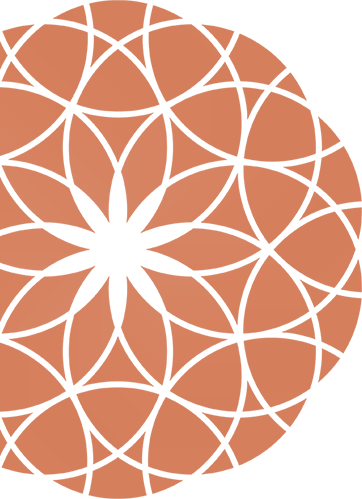

Blindspots
- By grace_health
- Feb 25 2021
Dr. Norman reflects on the public health costs of racism, and opportunities for change
A few years ago I was trying to find my husband in a sea of other runners competing in our local Beach to Beacon road race. I had a clear memory of seeing him wearing his usual bright orange track shirt at the start line. I could picture exactly how he looked, stretching his legs along the fence, waiting for his pod of runners to be released, the early morning light coming in through the trees and backlighting his golden-brown hair.
However, when he came around the bend, I very nearly missed seeing him, because he was wearing a blue t-shirt, literally the opposite color.
My clear, objective memory, NEVER ACTUALLY HAPPENED. My brain took the available data and literally made up a story on the spot that fit my preconceived notion of what I should be seeing. Was I crazy? Fortunately or unfortunately, this happens to all of us, a lot more often then we’d like to think about.
As illogical as it may seem, my brain is wired to filter everything I touch, taste, smell or see through a web of emotions and expectations. This is partly to save energy (it can only process a fraction of the mind boggling number of electrons encountering our body each moment), and partly because our neural network is laid down in grooves of sorts, like ruts in a dirt road.
Most of our neural networks are set in place early in life. They’re like ruts in a country road. *Technically*, a car driving down a dirt road can go any of 360 directions. However, 99% of the time, it’s just going to follow the rut. We are VASTLY more prone to think about something the way we’ve always thought about it, whether that’s correct, incorrect, or a complete fabrication.
This idea is particularly stuck in my brain right now, because I just took the Harvard University Race IAT (Implicit Association Test) for the first time. This test assumes that an objective person should spend about the same amount of time associating a “Good” descriptor (Happy, Kind, Smiling) with a black face as with a white face.
I have now taken the test several times, and am ABSOLUTELY SURE that I spent an equal amount of time pairing “Good” and black faces, as I did “Bad” and white faces.
However, humblingly and frustratingly, the test knows better.
Racist is a charged word, but I prefer to use it as a descriptor. Turns out, I’m moderately racist. I believe that most racism is not a choice, any more than the typical Kindergartner chooses what brand of footwear they wear on their first day of school. Their clothing choices generally depend more on the resources their parents had available when they were purchased, their culture, and their area of the country or world. Racism is just the soup we find ourselves in. It’s not a moral judgement, it’s just information.
However, knowing our racism matters A LOT. Knowing my blindspots, my brain’s expectations, is critical. At best, unexplored racism may cost a friend or two, or cause me to hire someone who is not as well suited to a job as another candidate. At worst, it may cost someone their life or livelihood.
If there’s anything this year has taught me, it’s that addressing racism isn’t something I can farm out to someone else. My ruts in the road, my blindspots, are mine to own, and I’ve got my Race IAT staring me right in the face. Addressing it, what I consider a public health emergency, starts with me.
And the reason I’m addressing this NOW, is that it IS a public health emergency.
Racism effects health outcomes in almost every area of medicine, from birth outcomes, to school performance, to the likelihood of developing chronic diseases such as asthma, diabetes, and cancer. It is literally EVERYWHERE.
As a physician, and as the founder of a medical clinic, this issue matters to me.
The good news is that our brains are built less like rut-filled dirt roads, and more like muscles. They strengthen along neural pathways we use most often. They are able to adapt, and grow new habits. We can quit smoking, we can eat better, we can brush our teeth every night and make fewer cavities. And, we CAN work on our racism.
Learning my blindspots has been a deeply rewarding journey. I’m learning to love the “me” that truly is, which is a lot more fun, and a lot easier, than trying to pretend to be someone I’m not.
The following are resources which we have found helpful to EDUCATE, and, most importantly, ACT. The systems of racism we live with today will not change unless people like you and I take responsibility for doing so.
Exploring my blindspots with humor and humility has helped me discover “me”, too. This is a process, not a destination. Owning, and appreciating my whole self is a gift. The resources below have helped me, and I hope they may help you, too.
Indigenous People’s History of the United States
–GREAT BOOK, meticulously researched and referenced.
How to Be Anti-Racist
–What is “anti-racist”, and can’t you just be “not racist?” Short answer: No. We’re all racist. You can chose to see it, or not, but it’s there. I like this book for its practical steps, and also self-effacing, cringe-worthy humor.
Waking Up White
–My first book about racism, written by a fellow white mom, living in Maine. Loved it.
Black Girl In Maine
–A conversation with the founder of this media group 2 years ago prompted my self-reflective journey into studying racism, and the articles published here continue to inform my work as a physician. Deeply grateful.
Black Owned Maine
–Support local businesses!
The American Indian College Fund
–Help future leaders and educators get their foot in the door. Lowering the bar to their dreams helps us all.
